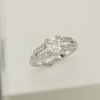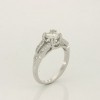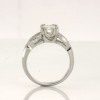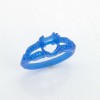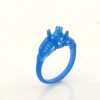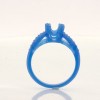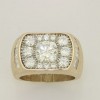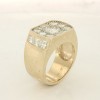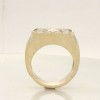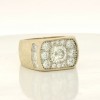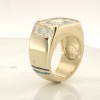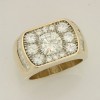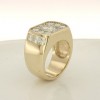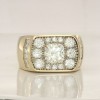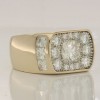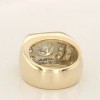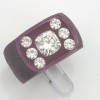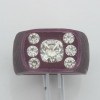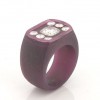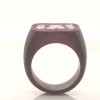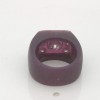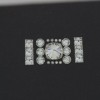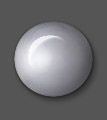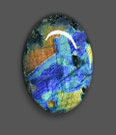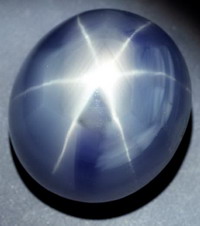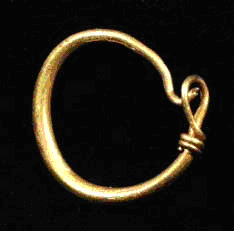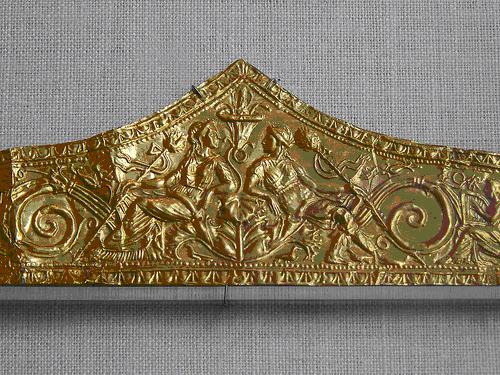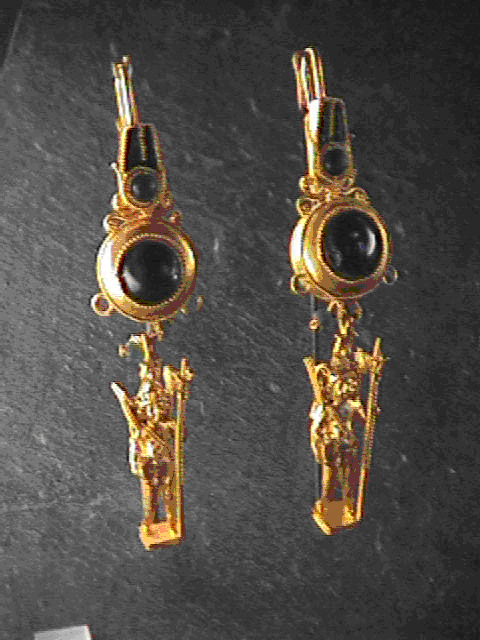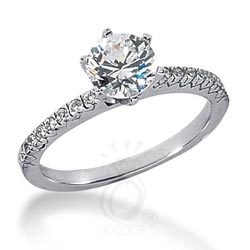We’re happy to share with you a few of the winning pieces at AGTA’s (American Gem Trade Association), revealed at the AGTA Spectrum Awards in New York City last week. To see all of the winners, check them out here.

This platinum and 18-karat yellow gold Samuel Getz Designs necklace won first place in the "Classical" category of the Spectrum Awards. It features yellow and blue sapphires, red spinel and diamonds.
First-place winners were:
Best of Show
Todd Reed, Todd Reed, Inc.
Palladium cuff bracelet featuring a 22.40-carat aquamarine accented with 6.90 carats of grey diamonds and 2.2 carats of white diamonds.
Best Use of Color
Martin Key, Martin Key Co.
22-karat yellow gold “Frame” ring featuring a 1.50-carat blue tourmaline accented with four Mexican fire opal baguettes, total carat weight 1.82.
Best Use of Platinum and Color
Niveet Nagpal, Omi Gems, Inc.
Platinum “Princess of Ratnapura” bracelet featuring nine round sapphires (14 carats total) and 8.48 carats of round diamonds.

Best Use of Pearls
Llyn L. Strelau, Jewels by Design
Sculpture titled “Who Are You” (pictured above) featuring two-tone gold and silver with freshwater baroque pearls, South Sea keshi pearls, akoya seed pearls, demantoid garnets, a 0.20-carat ruby and 0.03 carats of cognac diamonds on a crystal quartz base.
Fashion Forward
Gregore Morin, Gregore Joailliers
18-karat white and yellow gold earrings featuring a 22-carat lemon chrysoprase accented with 2.38 carats of garnets.
SPECTRUM AWARDS
Bridal Wear
First place:
Niveet Nagpal, Omi Gems, Inc.
Platinum and 18-karat yellow gold ring featuring a 5.55-carat oval tsavorite garnet accented with fancy yellow diamonds.

Business/Day Wear
First place and Best of Show:
Todd Reed, Todd Reed, Inc.
Palladium cuff bracelet (pictured above) featuring a 22.40-carat aquamarine accented with 6.90 carats of grey diamonds and 2.20 carats of white diamonds.
Classical
First place:
Samuel Getz, Samuel Getz Designs
Platinum and 18-karat yellow gold necklace featuring 68.77 carats of yellow sapphires, 24.34 carats of blue sapphires and 24.20 carats of red spinels with 22.38 carats of diamonds.

Evening Wear
First place:
Cynthia Renee Zava, Cynthia Renee Zava
Palladium necklace (pictured above) featuring a suite of green tourmalines, 75.89 carats total.
Men’s Wear
First place:
Mark Lauer, Mark Michael Designs
18-karat yellow gold cufflinks featuring jasper agate and lapis lazuli composite accented with 2-mm spessartite garnets and sapphires.
CUTTING EDGE AWARDS
Classic Cut Gemstones
Open Category Classic Gemstone
First place:
Joseph Ambalu, Amba Gem Corp.
8.04-carat pigeon blood ruby.
Open Category All Other Faceted
First place:
Ruben Bindra, B & B Fine Gems, 9.59-carat trillion-cut red spinel.
Phenomenal Gemstones
First place:
Robyn Dufty, DuftyWeis Opals, Inc., 36.73-carat Mexican fire Opal cabochon.
Pairs & Suites
First place:
Clay Zava, Zava Mastercuts
Suite of pastel Cuprian tourmalines, 127.40 carats total weight.
Faceting
First place:
Jeff L. White, J.L. White Fine Gemstones
48.83-carat square, cushion-cut morganite.
Carving
First place:
Joseph August Voss, Joseph August Voss
220.30-carat crystal quartz carving.
Combination
First place:
Thomas Trozzo, Trozzo
66.48-carat square, dimple, concaved, scissor-cut aquamarine.

